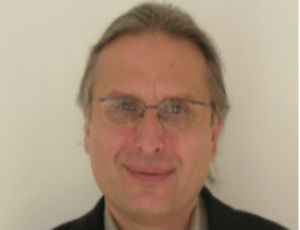As part of Polish American Heritage Month, we're hosting a film screening of Ida at 6:30 p.m. Thursday, October 8 at Harold Washington Library Center. Zbigniew Banas leads a brief presentation before the film.
Banas, a Polish and European cinema professor at Loyola University Chicago, has served as the master of ceremonies for the opening nights of the 13th Polish Film Festival in Los Angeles as well as 24th Polish Film Festival in Chicago. He recently shared his thoughts on the award-winning Polish film:
Q: Why should people come see Ida?
A: It's a unique film, full of emotions, substance and cinematic beauty. It's also the first-ever Polish production that won the Oscar in the Best Foreign Language Film category.
Q: Why is this film important to show during Polish American Heritage Month?
A: This film touches upon the major historical forces that shaped Poland during most of the past century: religion, communism, World War II and the Holocaust.
Q: Why do you think the film has translated so well to an American audience?
A: In spite of its Polish setting, the film's drama and spirituality are universal in nature. Searching for one's identity in a world beyond one's control is something that people all over the world can relate to. Additionally, the way this film evokes the memories of the Holocaust is still very relevant today.
Q: Without giving away any twists in the film, what is the most interesting part of the film?
A: The interrelationship between a young Catholic novice and her degenerate aunt is filled with many surprising moments—as well as fascinating political and religious subtext.
Q: Do you have any thoughts on the film’s short (82 minute) runtime?
A: The film follows two characters on their journey to discover the past, which in turn affects their sense of self-identity. It's an intimate tale that doesn't require a long movie. There's no need for subplots or parallel action.
Q: What do you think the film being shot in black and white adds to the overall experience of the film?
A: The black-and-white imagery evokes the sense of a dull, gray communist era in Poland over 50 years ago. Without the distracting use of color, the audience is also better able to focus on the characters who are at the center of this story.
Q: How well does the film portray ethnic and religious issues in Poland?
A: The ethnic and religious elements in the film provide the necessary context for the central characters' dilemmas. Some of the aspects of the historically complex relationship between Polish Catholics and Jews are highlighted in the film along universal lines, but others are peculiar to this story. The Holocaust provides a foundation and a vital point of reference for the drama set in post-war Poland, where life is significantly defined by both communist and religious elements.


